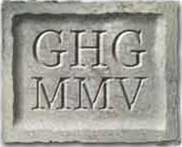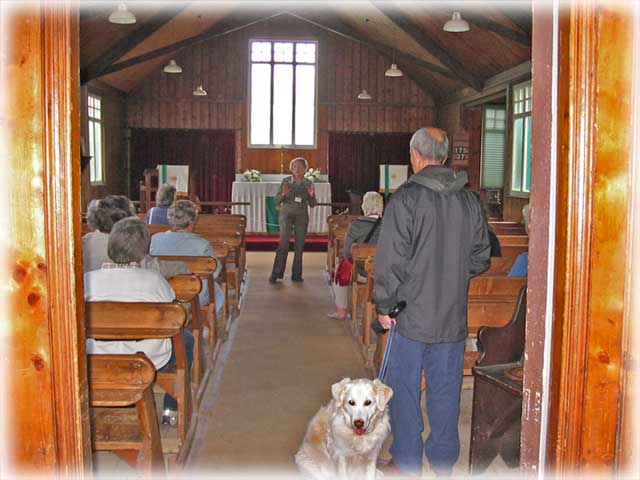
Guarlford History Group
The Tin Tabernacle
The Old Elm Chapel, or 'Tin Tabernacle' as it was often called, stood next to the Police House, near the junction of Hall Green and Guarlford Road, where two modern houses now stand (approached by the drive next to the horse trough). It was a corrugated iron structure, built on the initiative of a Mrs Brocklebank, wife of a shipping magnate, who lived at 'The Firs', Malvern. The Tin Tabernacle at the Avoncroft Museum of Buildings (opposite) gives an idea what the building might have looked like. Many people thought it was a Methodist Chapel, but it was, in fact, a Brethren Chapel. The Plymouth Brethren movement was founded in 1830, and later split into 'Open Brethren' and 'Exclusive Brethren'. Guarlford Chapel belonged to the former. Various retired missionaries acted as pastors at the little chapel, and Mrs Brocklebank herself used to visit, arriving by landau complete with grooms. Members of the chapel were expected to give a portion of their income to fund maintenance and running costs and provide special treats for the children. Children who attended St Mary's were reportedly a little envious of those who went to chapel, because the chapel outings always seemed much grander. 
Besides Sunday Services and Sunday School, there were Women's Meetings with knitting, sewing and Bible reading on Monday afternoons, and on Wednesday evenings there were services and Bible study for children and adults. During the Second World War, the Old Elm Chapel was taken over by the 'Andrew League', an organization that existed to give holidays to school children. During this time, no services were held in the chapel. After the war, the building was sold to property developers and demolished to make way for the housing estate that now stands around the site. Corrugated Iron Buildings were in fact the 'Portacabins' of their day (1830 - 1900) and used for school class-rooms, railway stations, dormitories for navvies, garages as well as chapels. They were ordered from catalogues and came flat packed. They were of timber frame construction and clad in corrugated iron. Window frames were pre-glazed. You could choose your design and type of timber. Scandinavian pine was most popular and all you needed was a hammer to knock in the wooden dowels. Most of the iron buildings that survive today are Tin tabernacles so people think it was only chapels built this way. 
More about the Tin Tabernacle and other non-conformist churches in Malvern can be found in the book, 'Dissenter's All!' written by Rod Ellis in 2008. |